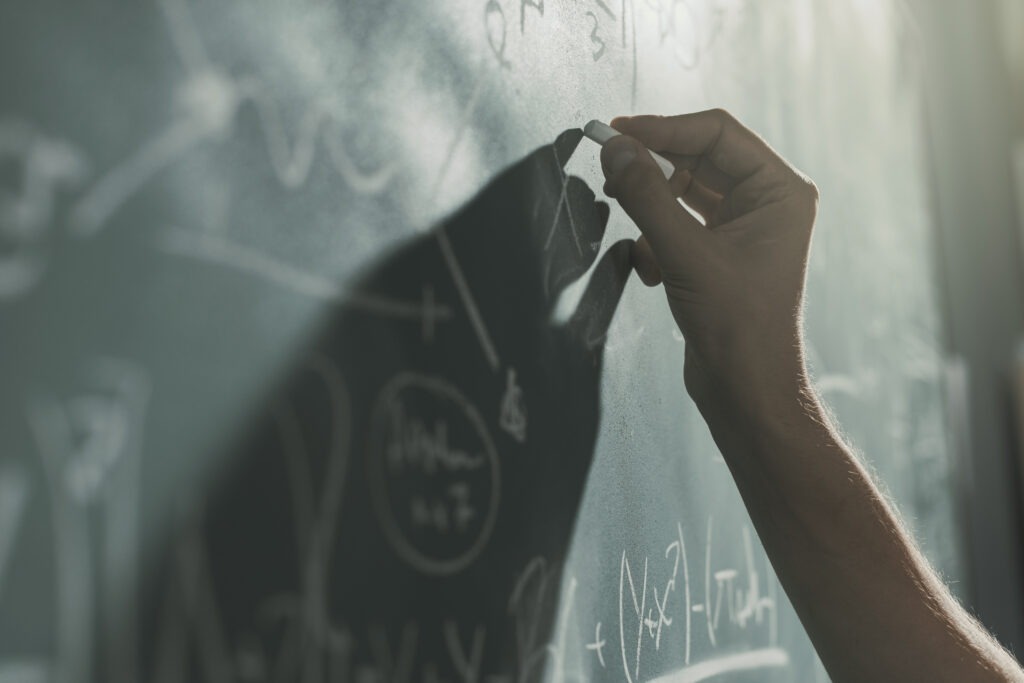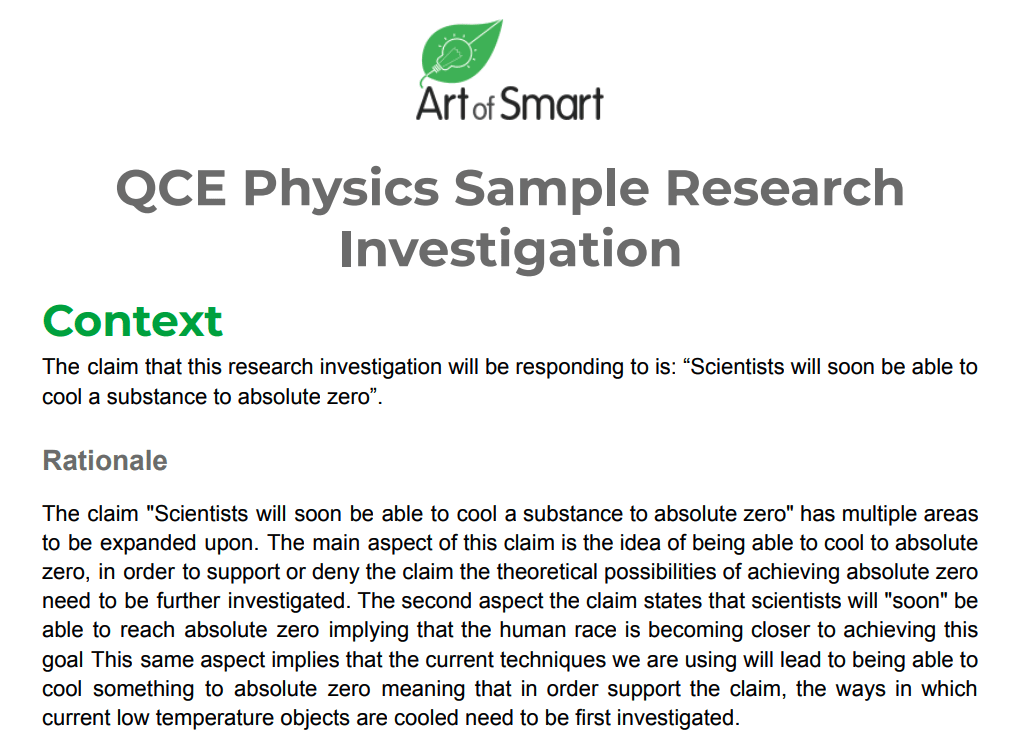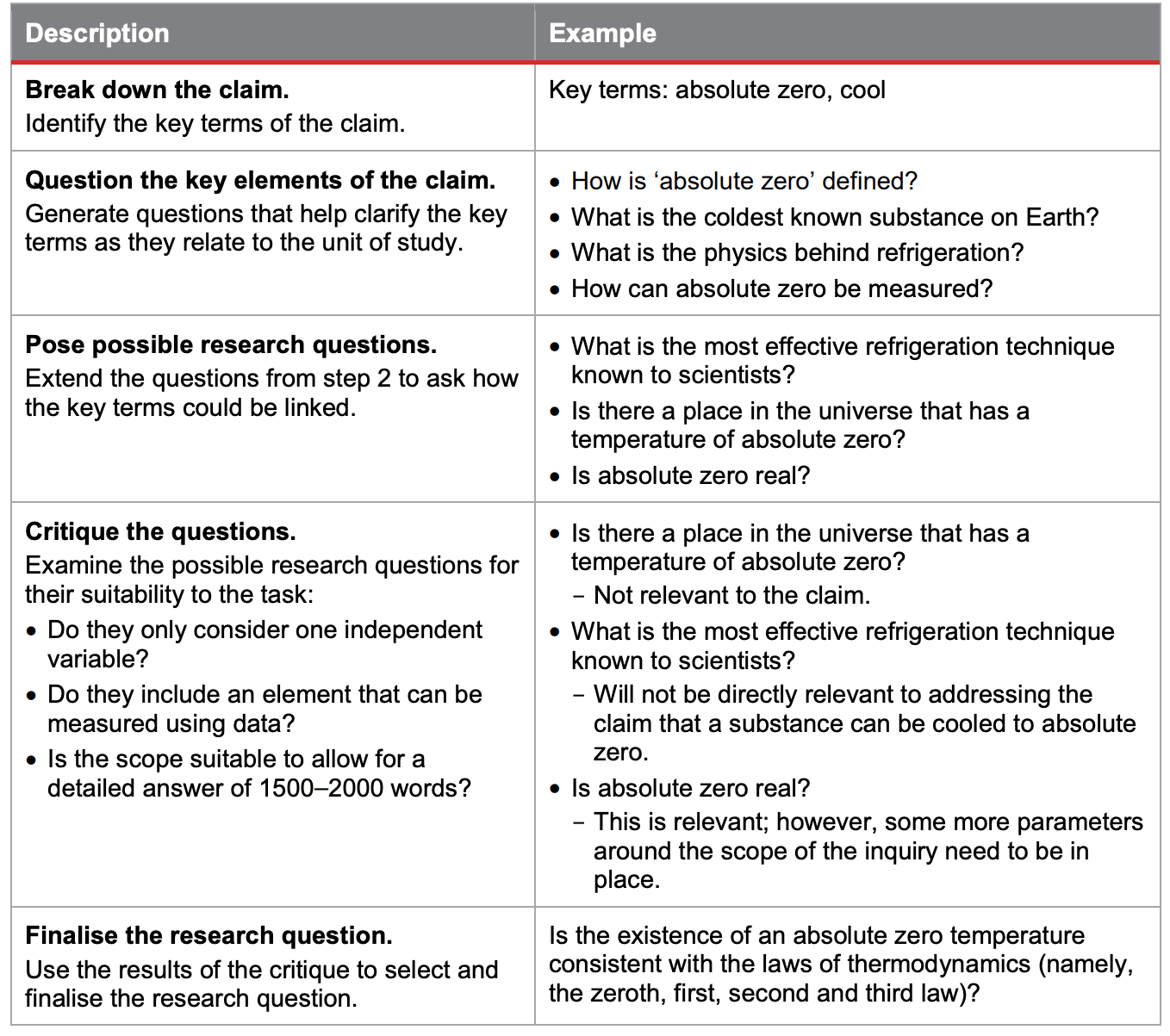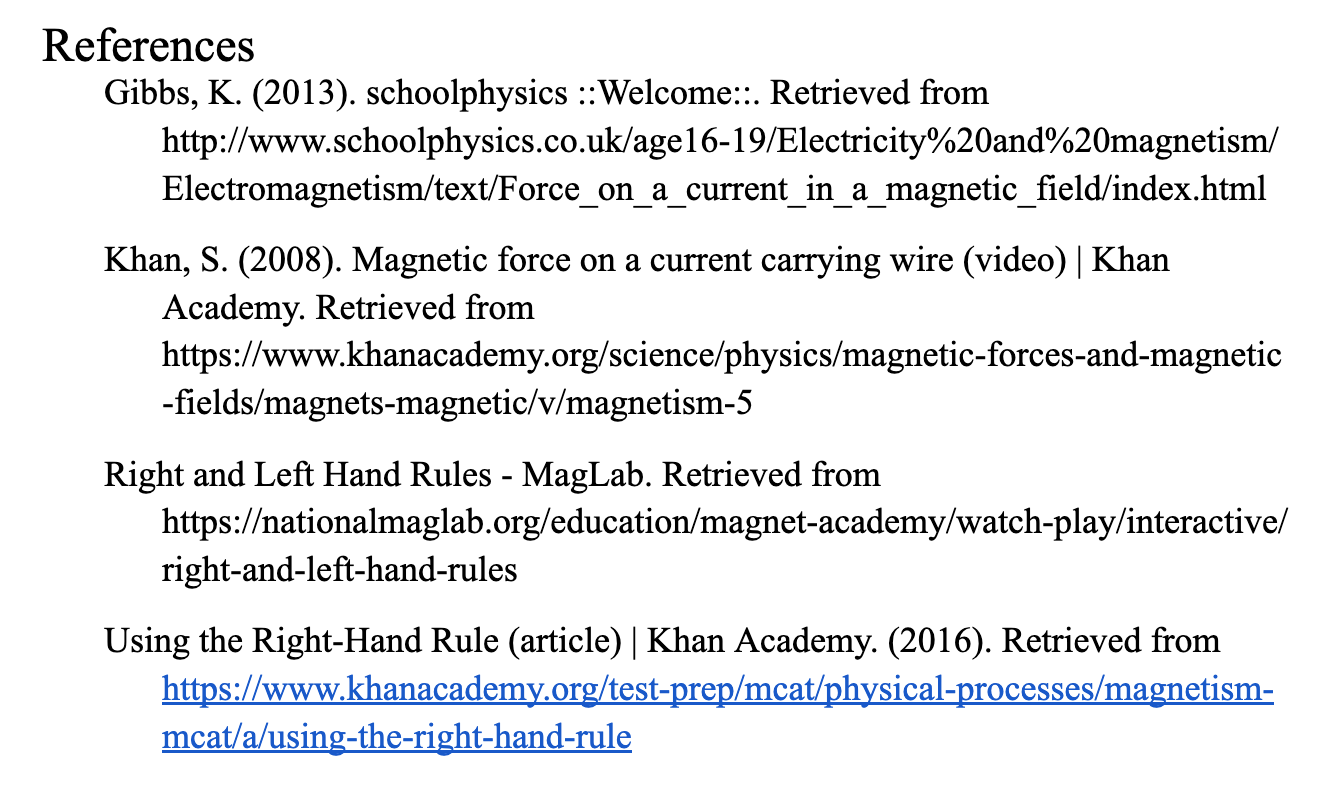Trying to wrap your head around completing a research investigation for QCAA Physics?
Let us break down the process for you! We’ve come up with 7 steps for you to follow so you’ll know exactly what to include in each of the sections of your research investigation.
Ready to get started? Let’s go!
What is a Research Investigation?
Step 1: Choose a Topic
Step 2: Form Your Rationale
Step 3: Write Up Your Summary of Research & Method
Step 4: Review the Literature Used
Step 5: Write Your Conclusion
Step 6: Identify Any Further Investigation Required
Step 7: List Your References
What is a Research Investigation for Physics?
Put simply, a research investigation is a detailed look into a specific claim through the examination of scientific papers and articles! They are 1500 to 2000 words in length and cover a variety of topics.
When completing a research investigation, you should provide a look into a variety of scientific literature sources and how they can be used to answer a specific research question. This research investigation will make up 20% of your total marks for QCAA Physics in Year 12.
In Physics, research investigations usually involve collecting and analysing experimental data in order to answer a research question. This process also involves analysing the accuracy and reliability of the results and the quality of the sources used.
The research investigation can be broken down into 7 main steps — let’s go through each of them individually and break them down!
If you’re looking for a guide on the research investigation for subjects other than Physics, here’s our Chemistry guide and our Biology guide!
Here’s a preview of our QCAA Physics sample research investigation:
Download our QCE Physics sample research investigation now!
Step 1: Choose a Topic
When you are given your task sheet for your research investigation, you will be given a list of claims to choose from. These claims are left purposefully vague to allow for a wide range of exploration in your research question which you will come up with later!
It is recommended to try coming up with a research question for each of the claims before you decide on one to focus on. This way, you can figure out which claim interests you the most and which claim you think you will have the easiest time researching.
Remember, if the topic is from Unit 3, you want to link to the theory you learned in Unit 3: Gravity and Electromagnetism!
Step 2: Form Your Rationale
The rationale in a research investigation differs greatly from a rationale in a student experiment despite having the same name.
In a research investigation, the aim of the rationale is to show how your ideas developed from the initial claim on your task sheet to a more specific research question.
Essentially, you should summarise your initial research done on the claim and explain your thought process in breaking down the claim.
At some point in your rationale, most likely towards the end, you need to state your research question. Make sure to underline and bold your research question to make it clear to the reader (and marker!) what your research question is.
This section should be no longer than 400 words at the very most.
Identifying Your Research Question for your QCAA Physics Research Investigation
When it comes to formulating a research question, QCAA has provided a great example with steps you can follow:
It is very important to keep your research question succinct (should be 1 sentence) yet still open ended enough for a detailed response.
Marking Guide
In terms of the ISMG, the rationale and research question correspond to the Research and Planning criteria.
To achieve the maximum marks on this section, your rationale must show a clear development of how you arrived at your research question from the original claim — to do this you need to show an adept understanding of the theory behind the topic.
It is also important to consider at this stage the sources that you will use — you need to ensure that the research question you come up with allows for a range of academic sources to be used.
Step 3: Write Up Your Summary of Research & Method
This section should be the longest part of your research investigation — there is no recommended word limit for this however as it can vary drastically depending on your research question.
It is quite difficult to summarise what should constitute this section as it can be done in so many different ways depending on your research question. To give you an idea of what this section may look like, have a look at the QCAA high-level research investigation example.
From this example you can get an understanding of some of the things common to this section regardless of research question!
For example, your summary should include an explanation of the theory behind the physics in the papers that you looked at. You should also establish some sort of method for answering your claim in this section.
Linking Back to Your Research Question for the Physics Research Investigation
By the end of this section you should be able to give an answer to your research question. Be sure to mention figures and tables referenced from scientific sources in this section.
It is recommended that you complete this section with a variety of subsections. For example, you could have a subsection for each scientific paper examined and then another subsection for the development of a method and answering your claim.
To do well, you need to make sure that you are identifying the most relevant parts from each source and showing the trends in the data for each of them.
Step 4: Review the Literature Used
This section is rather self-explanatory — you need to conduct an analysis of your scientific papers used.
You should explain how reliable (or unreliable) your sources are and a short explanation of how this reliability could be improved.
For example, if all your sources corroborate information with one another, then mention this! It makes your research look much more reliable than if they didn’t. This section should only be about a paragraph long, this may vary depending on how many sources were used however.
To do well in this section, you should succinctly and explicitly identify the limitations and uncertainties in the results of the literature used. This is used to justify your overall conclusions which will be discussed in the next section.
Step 5: Write Your Conclusion
Contrary to most other assignments, the conclusion actually isn’t the final section of your report! Your conclusion should directly address how you answered the research question.
It’s also important to remember that your research may have actually been inconclusive or answered the question in a way you didn’t predict; that’s okay!
You aren’t going to be marked down for not confirming your predictions, however, you will get marked down if you falsely report on this, so don’t be afraid of getting an inconclusive result. This section should be no longer than 100 words long.
Looking for a complete list of all resources for Term 3 of the QCE? Check out our Term 3 Guide!
Step 6: Identify Any Further Investigation Required
In this section you should outline what you would do if this same task were to be conducted again having gained new knowledge.
If you’d like, you can split this section up into improvements and extensions (similar to how you would do it in a student experiment).
The improvements you could suggest can range from conducting further research on a specific topic to completely changing the research question.
This section should be roughly 100 to 200 words. Just make sure that you can justify all of your choices in this section to do well.
Step 7: List Your References
In this section, cite any sources that you used to develop your ideas — this includes any initial research done. The referencing style you will need to use will depend on your school and isn’t particularly important, as long as it’s consistent.
Below is an example of APA referencing:
Other Things to Note
You can include any appendices you wish in your report however they cannot be marked so it is not recommended.
It is also important to mention, you need to come up with a title for your investigation — it won’t be marked but it is useful to let your reader know from the start what your investigation will be about.
The title should make reference to the content of your research question and the Physics topics that are going to be explored. It is recommended that you come up with a title after you have completed the rest of the report as it will allow you to signpost what is to come in your report.
Here’s a preview of our QCAA Physics sample research investigation:
Download our QCE Physics sample research investigation now!
On the hunt for other QCAA Physics resources?
Check out where you REALLY sit in your cohort compared to your peers with our FREE QCE Cohort Comparison Tool!
We’ve got plenty more practice questions for you to use to revise previous content from throughout the year! Check them out:
- Unit 3 Physics Data Test IA1 Practice Questions
- Practice Questions for Unit 3 & 4 Physics External Assessment
- Multiple Choice Practice Questions for Unit 3 & 4 Physics External Assessment
- QCAA Physics Practice Exam
- The Ultimate Guide to Unit 4 QCE Physics: Revolutions in Modern Physics
You’ll also want to have a look at our nifty guides for working on your QCAA Physics assessments below:
- The 9-Step Guide to Conducting a Student Experiment for QCAA Physics
- How to Ace Your External Assessment for QCAA Physics
Are you looking for some extra help with the Research Investigation for QCAA Physics?
We have an incredible team of QLD Physics tutors and mentors!
We can help you master the QCAA Physics syllabus and ace your upcoming Physics assessments with personalised lessons conducted one-on-one in your home or online!
We’ve supported over 8,000 students over the last 11 years, and on average our students score mark improvements of over 20%!
To find out more and get started with an inspirational QLD tutor and mentor, get in touch today or give us a ring on 1300 267 888!
William Bye is a Content Writer at Art of Smart and is currently studying a Bachelor of Advanced Science with Honours (majoring in Physics) at the University of Queensland. He was part of the very first cohort in Queensland to go through the ATAR system and wishes to help other students to make this journey as easy as possible. Will enjoys his time playing guitar in a band with his friends and hopes to continue balancing his science and music for many years to come.







